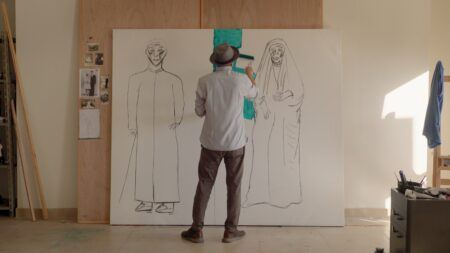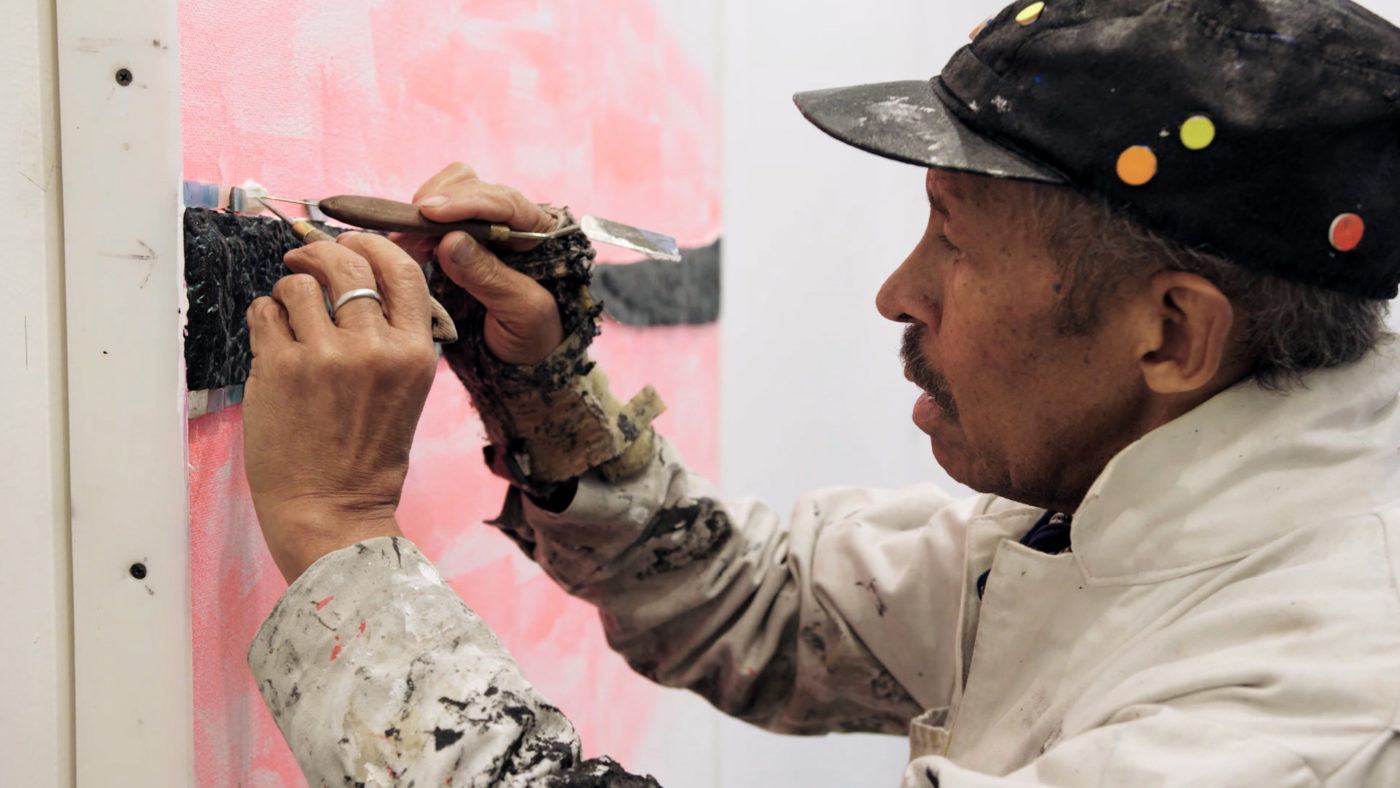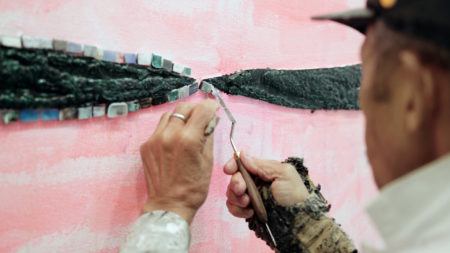In a new film from our Extended Play digital series, abstract painter Jack Whitten shares how he became an artist and the inspirations driving his work over nearly six decades. Filmed at work on what would become his final painting, Whitten passed away just three months after this interview—his final on-screen interview.
The final painting, Quantum Wall, VIII (For Arshile Gorky, My First Love In Painting), is on view at Hauser & Wirth New York through March 31 as part of a special presentation in memory of the artist.
“I just want to go down as one of the boys,” Whitten shares modestly in the film’s final moments. “Nothing big, just one of the boys.”
The film is the last of five premieres from our 21st anniversary winter film series.
Extending upon the film’s narratives, we revisited the original conversation between Whitten and Art21 producer Ian Forster, drawing further on the artist’s transformative experiences with mosaic:
ART21: When did your interest in mosaics begin?
JACK WHITTEN: I’ve traveled a lot in the Mediterranean area. I have lived in Greece, on the island of Crete since 1969. Visiting the sites of ancient mosaics in Europe and in Egypt has influenced me a lot. All of that connected with African art, early Greek Cycladic art, Minoan—it’s all had its effect on me.
ART21: How do you begin processing all these different influences?
JW: The key word is compression. These complexities are compressed and that allows me to go directly to the subject. I do a lot of reading in science. Particle physics and astrophysics excite me. The ancient people knew about animist beliefs—they claimed that all matter had a life force in it. I find it funny that when we study particle physics and the workings of quantum mechanics today, this stuff is active. Science tells us that all the aspects of matter can be broken down into these little bits, and they’re not static. I think there’s something within that, that connects to what we need today in terms of a worldview.
ART21: Talk a little more about your interest in mosaics.
JW: I had an amazing experience once. I was in Egypt at St. Catherine’s Monastery on Mount Sinai. At St. Catherine’s they have a very large-scale mosaic from the Justinian period that covers the whole apse in the back. And I was there in time for Greek Christmas with the old calendar, in late January.
St. Catherine’s does not have electric light; the whole services takes place in candlelight. And throughout the building there are huge tiered chandeliers with diameters of eight feet or more across, all with candles. As the service progressed, the monks were going around with these long poles and lighting the candles, so you were getting more light. And I had an epiphany. I looked at that mosaic and that damn thing was alive. I mean it was breathing.
I realized—oh my god—the people who made those mosaics did them concerning the light, to make them come alive for religious purposes. That mosaic was coming alive and it’s all because of how the master placed the tesserae into the wet pigment. It was quite an experience—very moving. So I used that.




